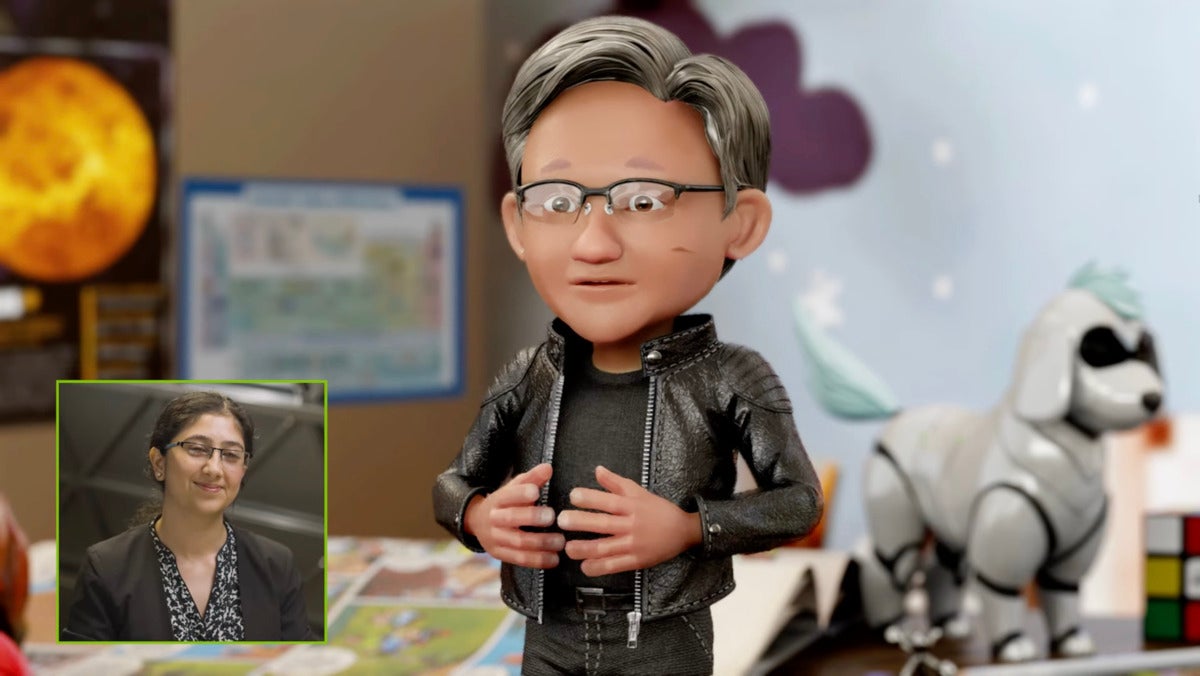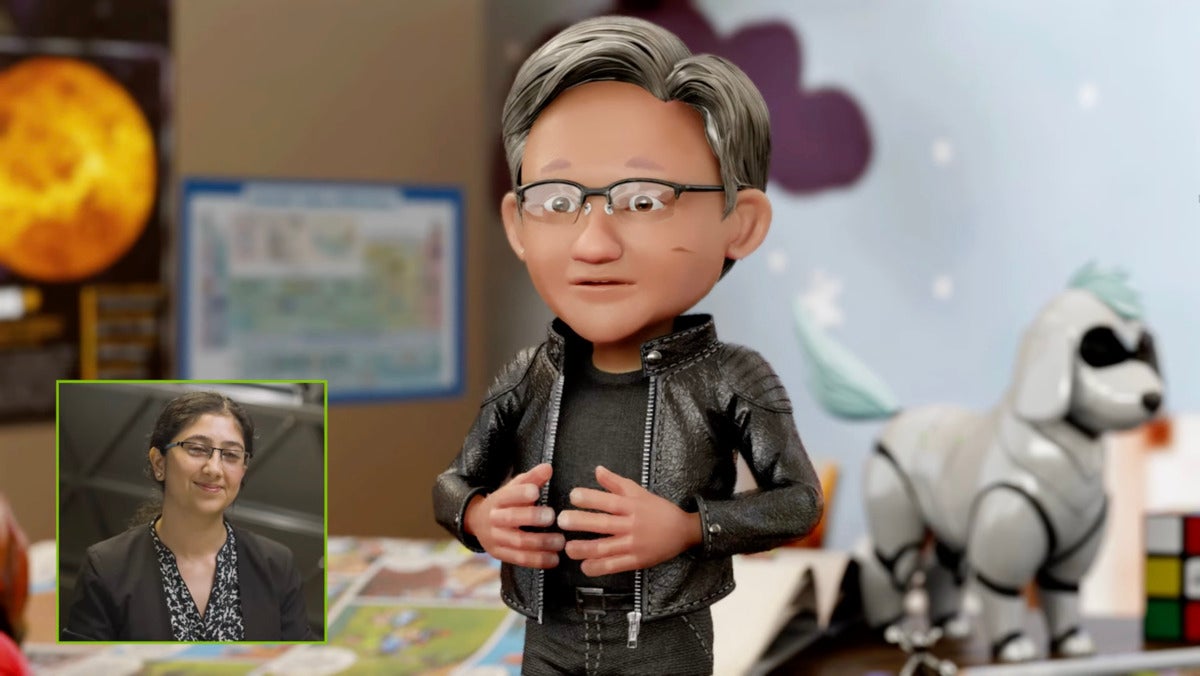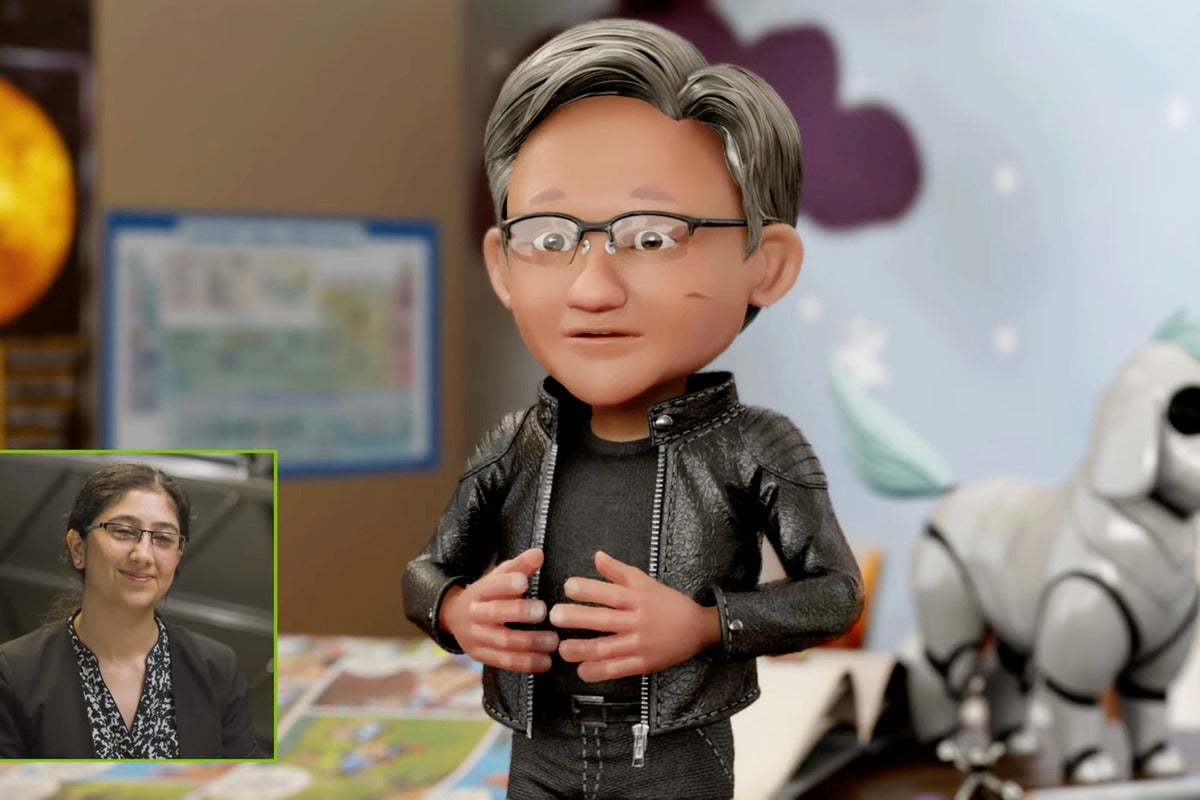
Disclosure: Nvidia is a client of the author.
Nvidia’s GTC conference is my favorite conference because the company doesn’t just talk about what it’s done; it offers up a framework that explains how it will meet needs I often didn’t even realize I had. For instance, this year’s event showcased several demos of technology that can take a video image of you in a videoconference, alter it real time, and allow your image to speak any language while you’re always looking at the audience. There’s also the future ability to potentially change your appearance on demand.
(Watching the CEO keynote is like looking into the future —Nvidia CEO Jensen Haung remains the gold standard on how to make one of these things epic.)
In another presentation, Nvidia highlighted an avatar of Huang entering a meeting and collaborating in real-time as his proxy. The avatar looked more like a cartoon, but in a conversation after the presentation, Huang indicated we are within three to five years of combining those technologies. By then, you’ll be able to create a digital twin that can do tasks you are unable to do because of time conflicts, or that are so basic artificial intelligence can easily complete them. Your avatar could conceivably continue to exist and advance after you leave the company, retire ,or die.
This future raises some fascinating issues we’ll face when these advances become available.
Constructing a digital twin
Huang suggested a future where many of us will have metaverse instances that are like web pages today. Instead of a bunch of text that details who we are — or in my case, what I’ve written — you instead get access to a photorealistic avatar of the site owner. This avatar can then be invited to collaborate, answer questions, and even write articles, papers, or other forms of communication.
In that scenario, you’d own your metaverse instance and likely have the copyright to the related content, which would remain coupled to you. But what if, instead of you owning the site, your company owns it? (It wouldn’t be cheap to create, though services will likely emerge that could create it for you much as we have website services today.) The company would want to keep anything you did for it, and you’d want to keep your private stuff private. But having an avatar serve as your proxy, you’d need both sets of data. That could prove problematic.
For instance, if you just left Ford for GM, Ford wouldn’t want GM asking your avatar about Ford strategy — and GM wouldn’t want Ford to mine confidential information from your avatar. This could be handled by properly classifying information, but I doubt either company would want you to do that yourself. This might require a third-party service to protect your employer’s confidential information and secure your personal information from the companies you work for.
The rise of avatars clearly brings up all kinds of similar issues.
Digital immortality?
If your avatar remains after you leave for another job, retire or die, there should be some way to compensate you for its use after your departure; in exchange, you’d keep the avatar updated and allow it to mature without compromising confidentiality. It would be in your interest to keep it viable, but with conditions and protection in place your avatar doesn’t lead to an intellectual property fight.
People working in generic fields might be able to create multiple avatars that work in a variety of companies, each generating income that, in total, yields a living — much as people live on social media today. Coming up with services to manage that stable of avatars sounds like a future business opportunity for someone.
When you die, that same avatar could remain, providing your heirs with income (as well as advice and companionship). Some people could even sell or rent versions of their avatars to game companies that would use them for more realistic non-player characters (NPCs). A version of you could spend its digital life as multiple NPCs that seem real and behave more like people.
When avatars collaborate
Avatars of the future could be used for collaboration and you would always look good (you could freeze your age). There could, of course, be an issue when it comes to language and the need to translate what you’re saying into several languages at once. If, as Huang suggests, the application sits between you and your camera and microphone, it could do automatic translation into other languages. The collaboration app would need to be able to alter your image to reflect how your words are presented and avoid real-time latency.
If Huang is correct, and he generally is, we are three to five years from having the ability to be in multiple places at once and propagate multiple, wage-earning versions of ourselves. This could either provide a better life or create insane levels of complexity that may be hard to manage. Dealing with that second part first will affect how long it takes related services and capabilities to mature — and just how much litigation will result. I can already imagine several problems around who owns your avatar, and whether the information behind it is managed well enough.
I’ll leave you with a final thought. By the end of the decade some of us could have thousands of digital proxies, basically digital kids, running around. Who’s responsible if one of them goes off the rails?



